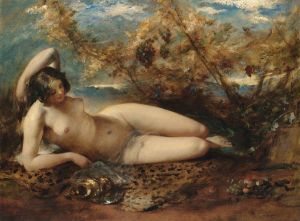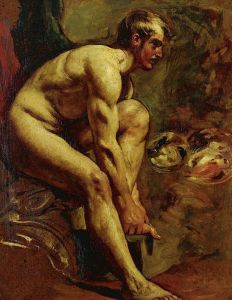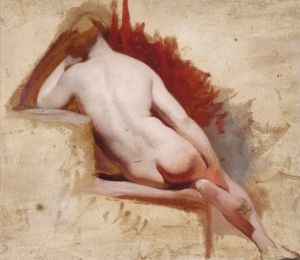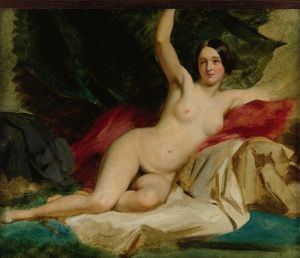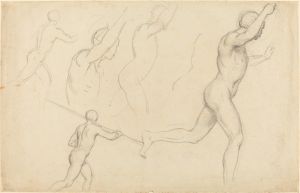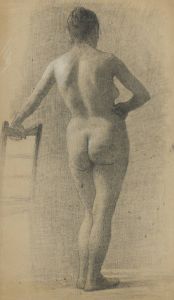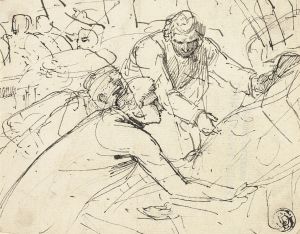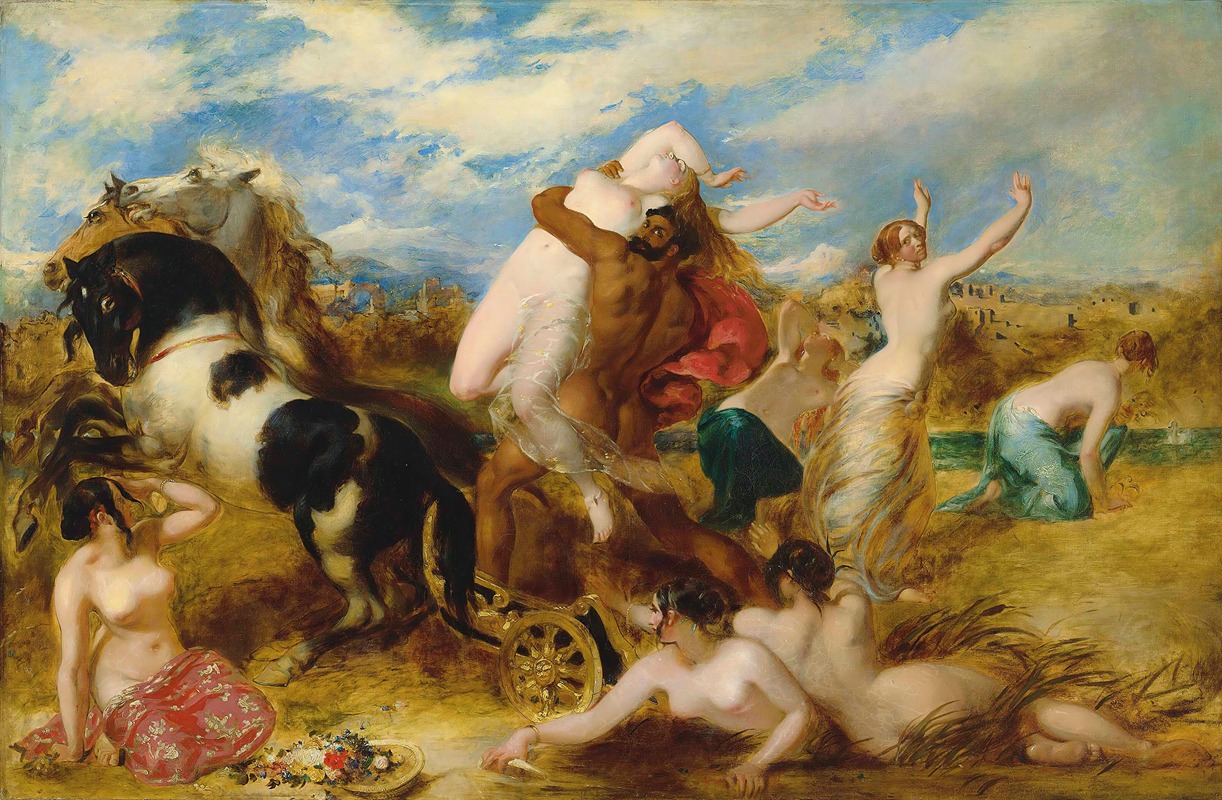
Pluto Carrying Off Proserpine
A hand-painted replica of William Etty’s masterpiece Pluto Carrying Off Proserpine, meticulously crafted by professional artists to capture the true essence of the original. Each piece is created with museum-quality canvas and rare mineral pigments, carefully painted by experienced artists with delicate brushstrokes and rich, layered colors to perfectly recreate the texture of the original artwork. Unlike machine-printed reproductions, this hand-painted version brings the painting to life, infused with the artist’s emotions and skill in every stroke. Whether for personal collection or home decoration, it instantly elevates the artistic atmosphere of any space.
"Pluto Carrying Off Proserpine" is a painting by the English artist William Etty, completed in 1839. Etty was known for his history paintings and his ability to depict the human form with a particular focus on the nude. This painting is a representation of a scene from classical mythology, specifically the abduction of Proserpine by Pluto, the god of the underworld.
The myth of Proserpine, also known as Persephone in Greek mythology, tells the story of her abduction by Pluto (Hades in Greek mythology), who falls in love with her and takes her to the underworld to be his queen. This myth has been a popular subject in art and literature for centuries, symbolizing themes of life, death, and rebirth, as Proserpine's eventual return to the surface world is associated with the changing seasons.
Etty's painting captures the dramatic moment of abduction. Pluto is depicted as a powerful figure, carrying Proserpine away with a sense of urgency and determination. Proserpine, on the other hand, is shown in a state of distress, her body language conveying her reluctance and fear. The composition of the painting emphasizes the contrast between the two figures, highlighting the tension and drama of the scene.
William Etty was born in 1787 in York, England, and became one of the most prominent British artists of his time. He studied at the Royal Academy of Arts in London and was heavily influenced by the works of the Old Masters, particularly the Venetian painters such as Titian and Rubens. Etty's fascination with the human form and his skill in rendering it with both anatomical precision and sensuality earned him both acclaim and criticism during his career.
"Pluto Carrying Off Proserpine" is characteristic of Etty's style, which often involved rich color palettes and a focus on the interplay of light and shadow to create depth and emotion. The painting reflects Etty's interest in mythological and historical subjects, as well as his commitment to exploring the complexities of human emotion through art.
The painting was exhibited at the Royal Academy in 1839, where it received mixed reviews. Some praised Etty's technical skill and the dramatic intensity of the composition, while others criticized the overt sensuality and the depiction of the nude form, which was a recurring point of contention in Etty's work.
Today, William Etty's paintings, including "Pluto Carrying Off Proserpine," are appreciated for their contribution to the Romantic movement in British art. They are seen as important examples of 19th-century history painting, reflecting the era's fascination with classical mythology and the exploration of human emotion through dramatic narratives.
Etty's work can be found in various public collections, including the Tate Gallery and the York Art Gallery, which houses a significant collection of his paintings. "Pluto Carrying Off Proserpine" remains a testament to Etty's artistic vision and his ability to capture the timeless themes of love, power, and transformation inherent in mythological stories.








